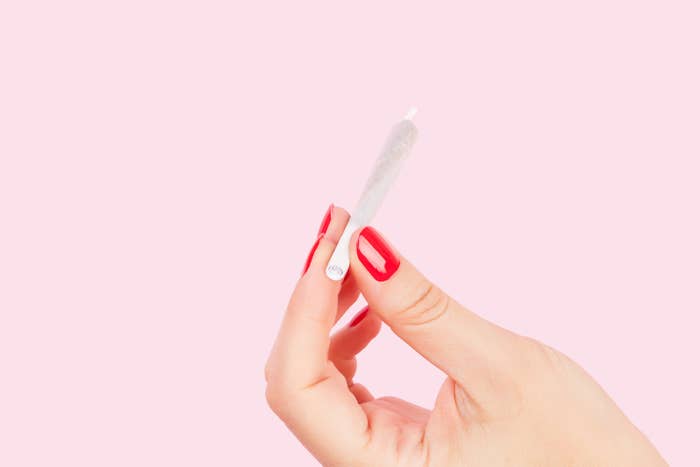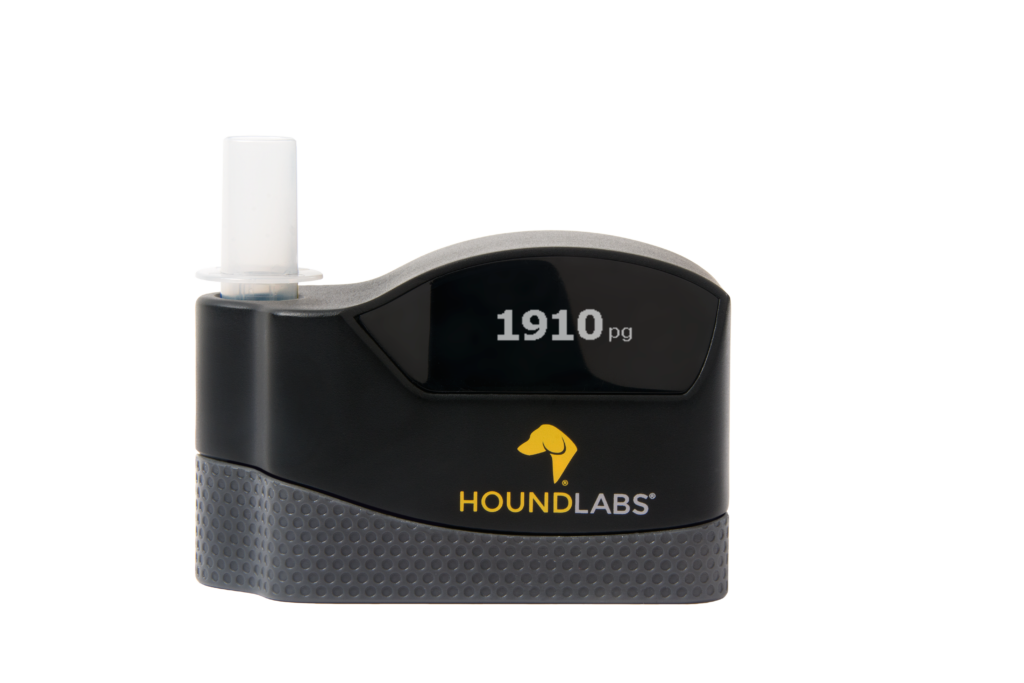
Getting people to enroll in scientific studies is usually a long and difficult process. Not so for Hound Labs, which is working on a breathalyzer that shows whether you’ve smoked weed in the last few hours.
Earlier this year, when the Bay Area startup wanted to get pot smokers high to test the accuracy of its device, staff put up posters and asked friends for referrals. “After two days, we had so many people calling that we didn’t need more,” CEO Mike Lynn told BuzzFeed News. “Maybe in retrospect we shouldn’t have been surprised.”
And in a field test, people get stoned and drive a car around a controlled driving course — all in the name of science. (No word on whether the brave volunteers get Taco Bell afterwards.)
The Hound Labs staff, along with a handful of other companies and groups, is tackling a thorny and salient problem: As more states legalize marijuana for both recreational and medicinal use, more stoned drivers are hitting the road, according to an April report for the Governors Highway Safety Association. Of the drivers who died in car crashes and tested positive for drugs in 2015, more than one-third had some form of marijuana in their systems. And since Colorado and Washington legalized recreational marijuana, there’s been an increase in reports of deaths and driving cases that involve the drug.
But it’s difficult for cops to check how recently someone’s smoked marijuana, and how much, since the body metabolizes the drug much differently and less predictably than it does alcohol, and in a urine test, THC, the component of cannabis that gets people high, can show up about a month after use. So in the absence of objective, quantifiable evidence, risky drivers can get charges dismissed — and sober drivers can be falsely accused of being high.
“The challenge with marijuana is the drug doesn’t work like alcohol does. You may not get a level that’s a .08 equivalent,” said J.T. Griffin, chief government affairs officer for Mothers Against Drunk Driving, referring to the national blood alcohol concentration limit. “And that really is what research needs to look at, and what research needs to develop. How do we best determine scientifically what marijuana impairment looks like?”

Hound Labs raised $8 million last month from Benchmark, the powerhouse Silicon Valley venture capital firm. Lynn says it plans to start selling breathalyzers by the end of the year, initially to law enforcement agencies and, perhaps in the future, to employers for worker drug-screening tests. Other companies and scientists at work on breathalyzers of their own include Cannabix in Vancouver and a Washington State University research team.
Sound lit? Scientists aren’t so sure. These groups “have been putting out a lot of promotional material about their products, but they haven’t put out any scientific data for any of us to look at and say whether it’s working or not working,” said Marilyn Huestis, a former chief of chemistry and drug metabolism at the National Institute on Drug Abuse and a consultant to Cannabix.
What’s more, scientists and lawmakers disagree over how much THC it takes to impair someone’s driving. Eighteen states have some kind of law about driving under the influence of marijuana. Some allow drivers to have limited levels of THC while others have zero-tolerance approaches. And the rules are as inconsistent as the rules about marijuana itself: Medicinal marijuana is allowed in Washington, DC, and 29 states, and recreational use in eight plus DC, as of April.

“Yes, there’s marijuana around,” said Jim Hedlund, an independent traffic safety consultant who co-authored the report for the Governors Highway Safety Association. “Is it impairing? For some drivers, it certainly is — but you cannot conclude just from its presence that it’s impairing.”
Drunk people tend to “weave and swerve and not be able to walk a straight line,” Lynn said. “With marijuana, what often happens is it’s the inability or decreased ability to make judgment calls,” like deciding what to do when a kid suddenly stops in a crosswalk up ahead.
The way your body eliminates alcohol is pretty straightforward: The more you drink, the more it shows up in your blood and breath, the more it affects your brain, and the effect wears off over time. But whereas alcohol dissolves in water, THC concentrations tend to quickly decrease as the drug works its way through the body and the feeling of a high increases. In habitual smokers, THC can remain in the body in low amounts long after the euphoria.
That biological process poses a challenge for Hound Labs. Its device scans for traces of THC in breath, but “so little of it exists in breath and it goes away so quickly,” said Lynn, an emergency room physician, reserve deputy sheriff, and former venture capitalist. “To ID people who have it in their breath for a couple hours, you have to have technology that allows you to measure it in parts per trillion” — in other words, very, very small amounts. He likened it to “taking eight or nine Olympic-sized swimming pools, filling them with sand, then telling someone to go find 200 green THC particles of sand mixed in.” The THC remains detectable in breath for about two hours after being smoked, Lynn says.
Lynn’s team has built a disposable cartridge that slots into a handheld loading dock, and filled the cartridge with a proprietary mix of chemicals that find, bond to, and expand THC molecules to make them countable. So far, he said, the tool seems to work whether people are smoking blunts or bongs, or munching extra-special brownies. Lynn says his team has had early success, though their studies are ongoing and no data has been published.
For one study, volunteers light up inside designated smoking facilities at a local hospital. They test out the accuracy of Hound’s prototype device compared with a chemistry-analysis laboratory technique that’s considered the gold standard. This data helps Hound figure out how breath THC levels correlate to impairment — as Lynn put it: “If you smoke 10 joints a day, what does that do to your levels versus someone who smokes one joint a month?” For the driving study, which started last month and does not involve UCSF, volunteers drive an obstacle course sober, then get baked and navigate the course again — under supervision, of course, and while being filmed.
“If you smoke 10 joints a day, what does that do to your levels versus someone who smokes one joint a month?"
One advantage of a breathalyzer is that police officers are already used to administering breathalyzer tests on suspected drunk drivers, Lynn says. (Hound’s device is designed to pick up on alcohol in addition to marijuana.) And Lynn says that Hound’s tool would cost roughly the same as an alcohol breathalyzer: around $500 to $1,000 for the main device, and $15 to $20 for each disposable cartridge.
THC levels could also be measured in saliva, which, like breath, is much easier to get than a blood or urine sample from a pulled-over, disoriented driver. In fact, there are already a handful of saliva-based THC tests on the market, such as from the German company Dräger. But there isn’t enough evidence yet to support their widespread adoption, scientists say.
Any marijuana-screening test must clear an extremely high bar of accuracy, said Huestis, the toxicology consultant. The cannabis plant contains dozens of cannabinoids in addition to THC, including ones that don’t produce a high, so a device must be able to tell them apart, not to mention nail the timeframe in which someone is actually under the drug’s influence.
And Huestis argues that that laws can never set one universal impairment level, because research has shown that people metabolize marijuana differently based on a number of factors, including how habitual a smoker is. Instead, she says, officers should make arrests and press charges based on a field sobriety test and a biological test that shows which drugs are in their system.
“We have all the data we need to know there’s not one number that is going to separate and identify all impaired people from non-impaired people,” she said.
CORRECTION
Of US drivers who died in car crashes in 2015 and tested positive for drugs of some kind, more than one-third were found to have marijuana in their systems. An earlier version of this story misstated this statistic.
